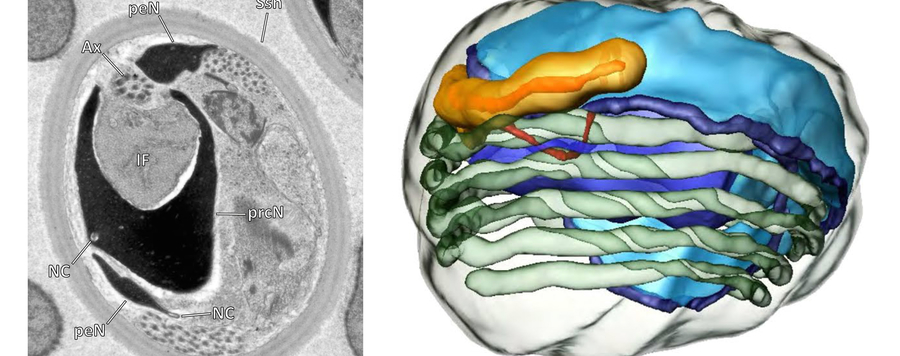
Sperm in pholcid spiders
Background
Pholcidae represent one of the largest and most diverse spider families and have been subject to various studies regarding behavior and reproductive biology. In contrast to the solid knowledge on phylogeny and general reproductive morphology, the primary male reproductive system is strongly understudied, as it has been addressed only for few species. Those studies however suggested a high diversity of sperm and seminal secretions across the family. To address this disparity and reconstruct the evolution of sperm traits, we investigate the primary male reproductive system of pholcid spiders by means of light, X-ray, and transmission electron microscopy using a comprehensive taxon sampling with 46 species from 33 genera, representing all five subfamilies.
Results
Our data show a high disparity of sperm morphology and seminal secretions within pholcids. We document several sperm characters that are unique for pholcids, such as a helical band (Pholcinae) or a lamellate posterior centriolar adjunct material (Modisiminae). Character mapping revealed several putative synapomorphies for individual taxa. With regard to sperm transfer forms, we found that synspermia occur only in the subfamily Ninetinae, whereas the other subfamilies have cleistospermia. In several species with cleistospermia, we demonstrate that spermatids remain fused until late stages of spermiogenesis before ultimately separating shortly before the coiling process. Additionally, we explored the previously hypothesized correlation between sperm size and minimum diameter of the spermophor in the male palpal organ. We show that synspermia differ strongly in size whereas cleistospermia are rather uniform, but neither transfer form is positively correlated with the diameter of the spermophor.
Conclusions
Our data revealed a dynamic evolution of sperm characters, with convergences across all subfamilies and a high level of homoplasy. The present diversity can be related to subfamily level and allows for assignments of specific subtypes of spermatozoa. Our observations support the idea that Ninetinae are an ancestral clade within Pholcidae that have retained synspermia and that synspermia represent the ancestral sperm transfer form of Pholcidae.





